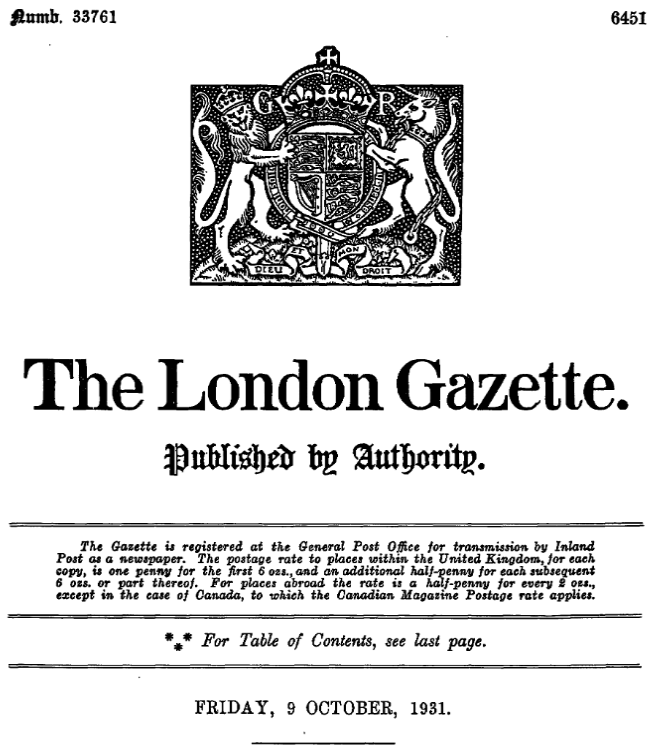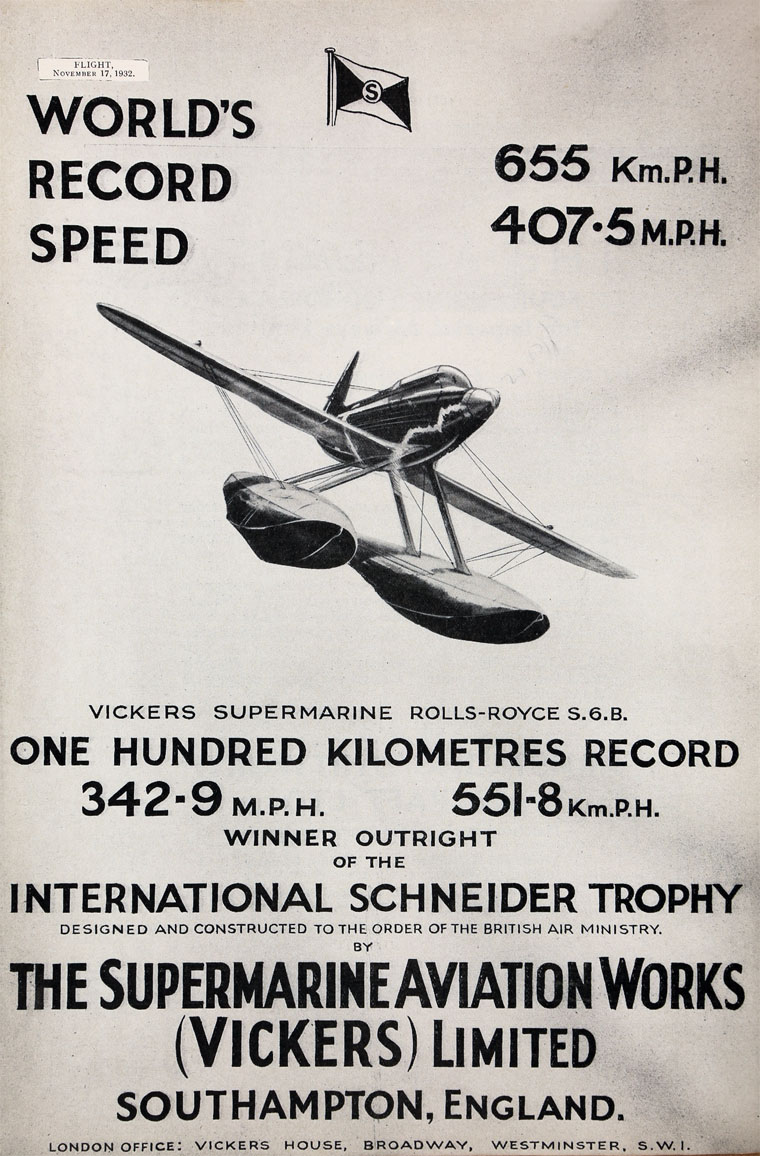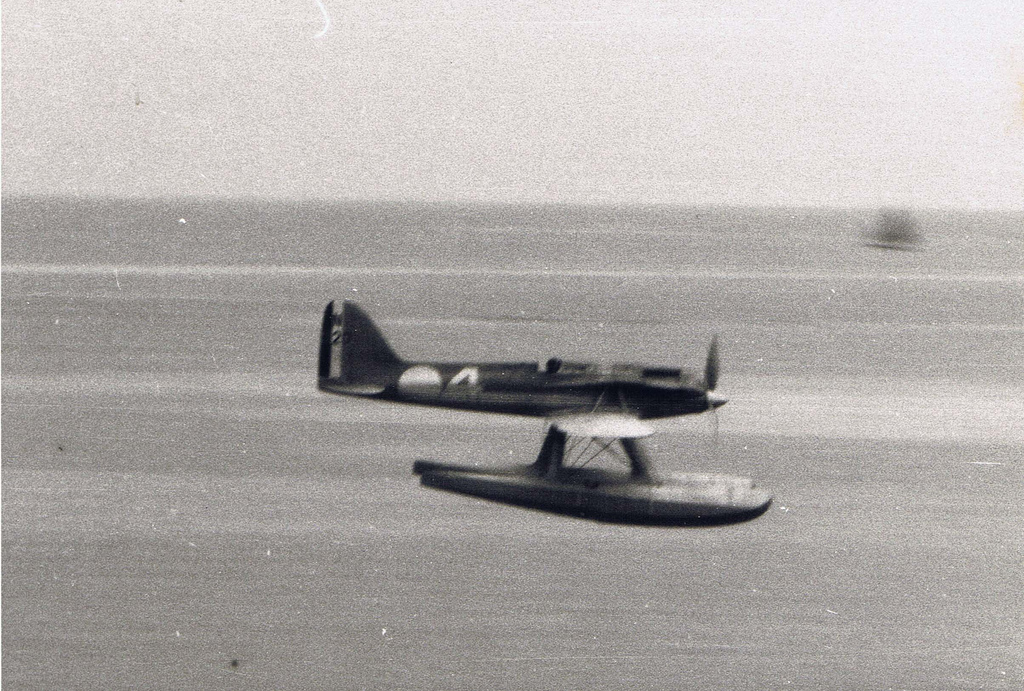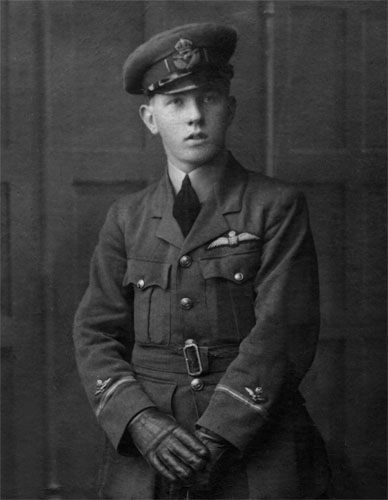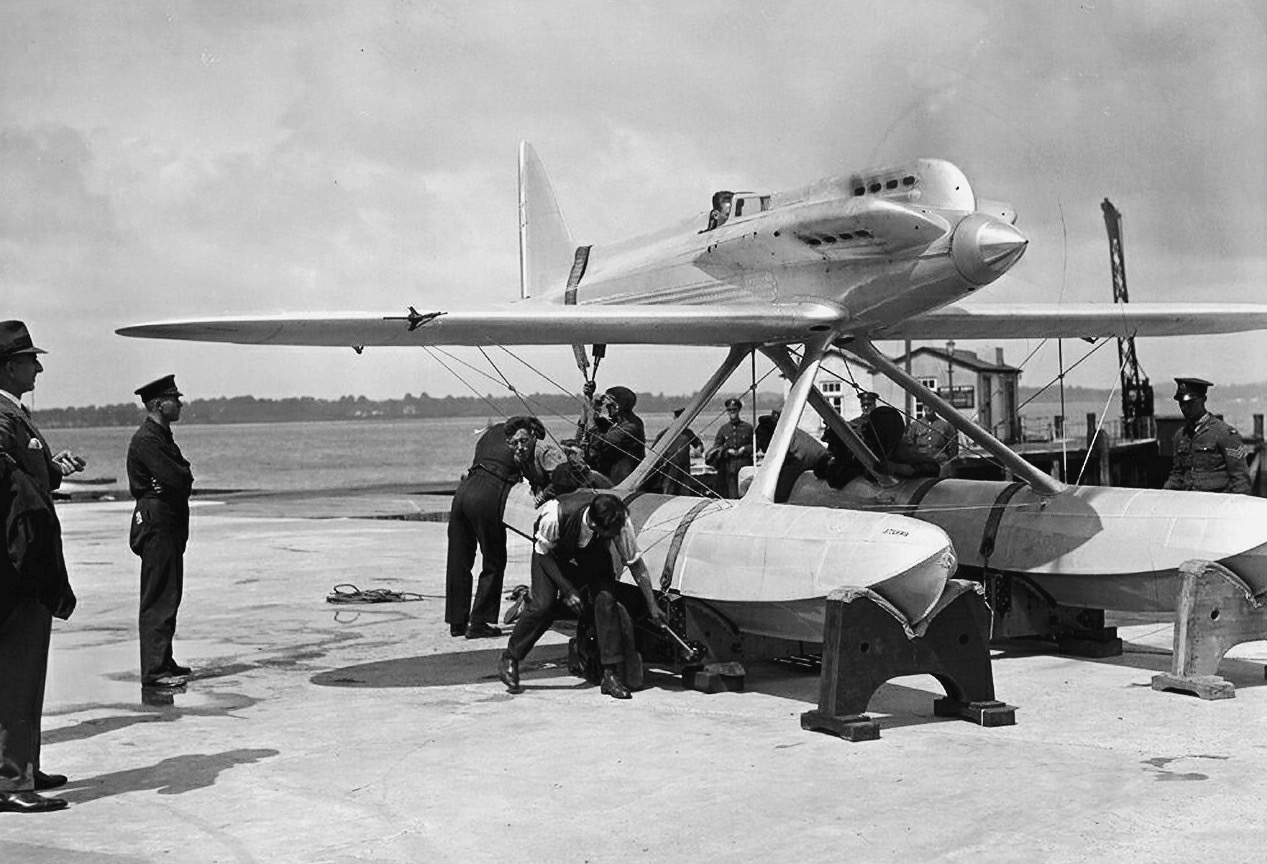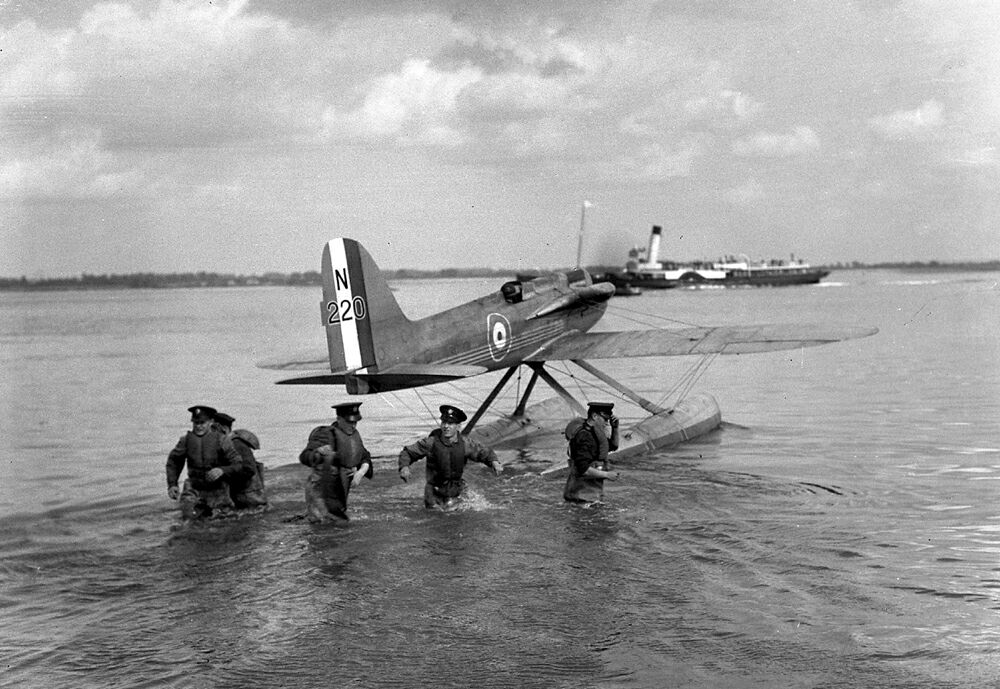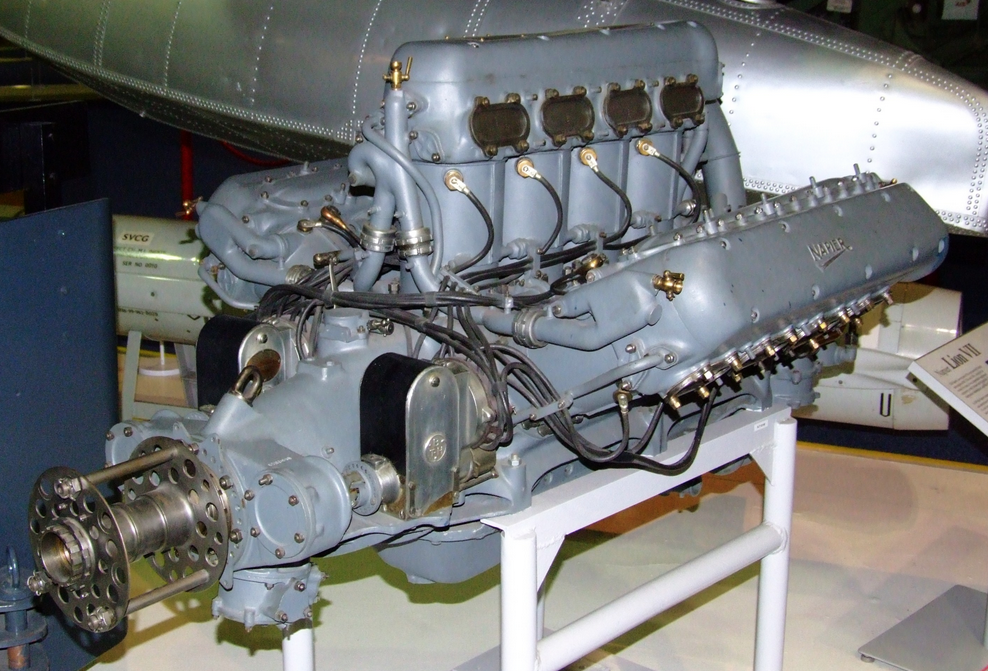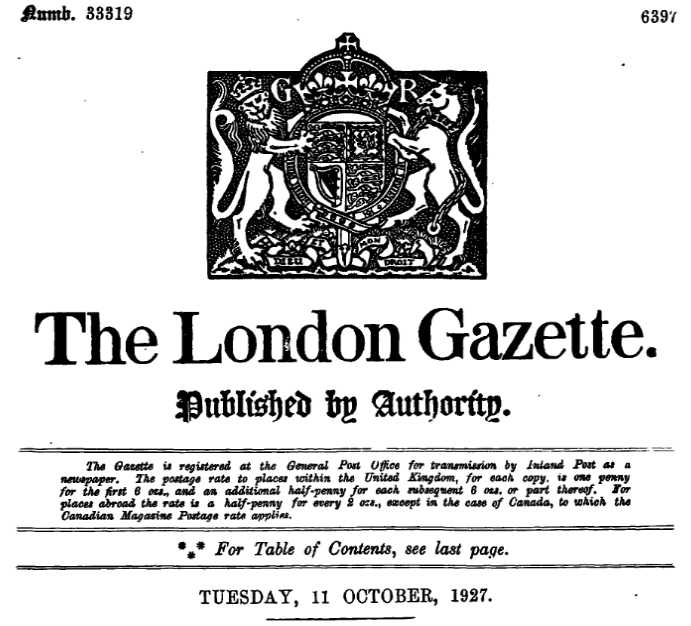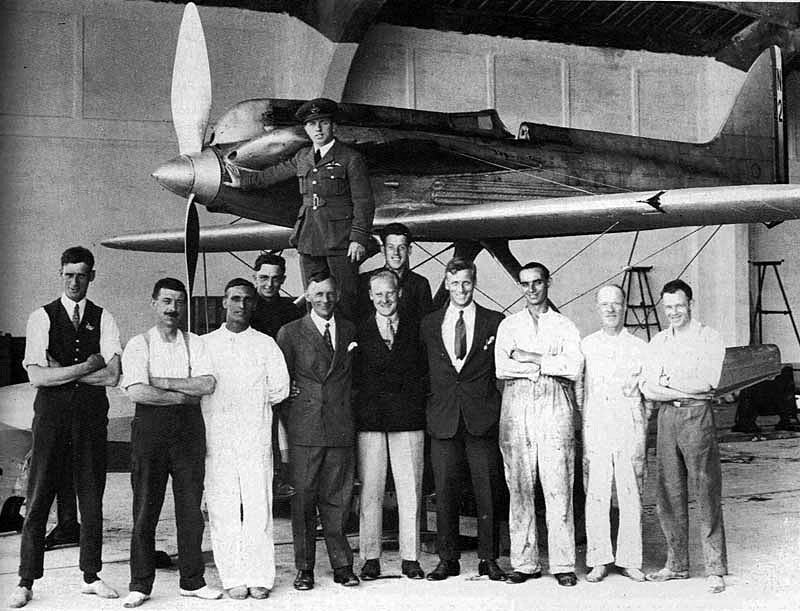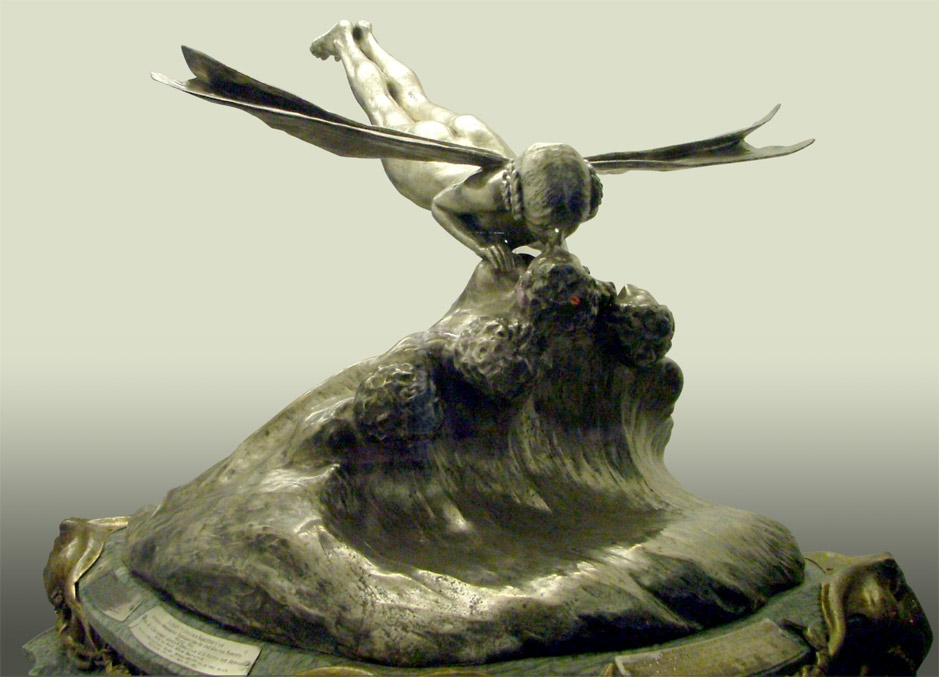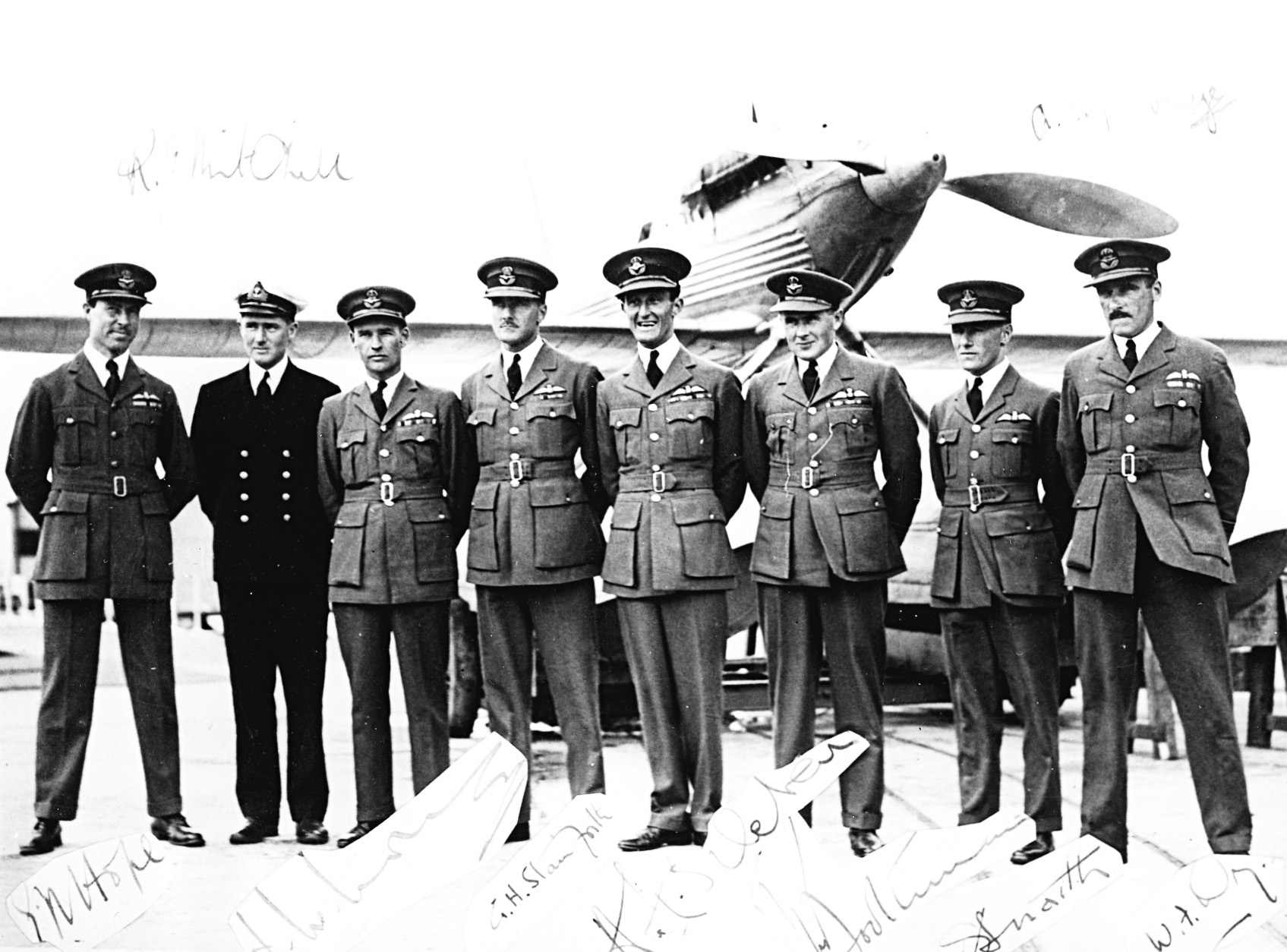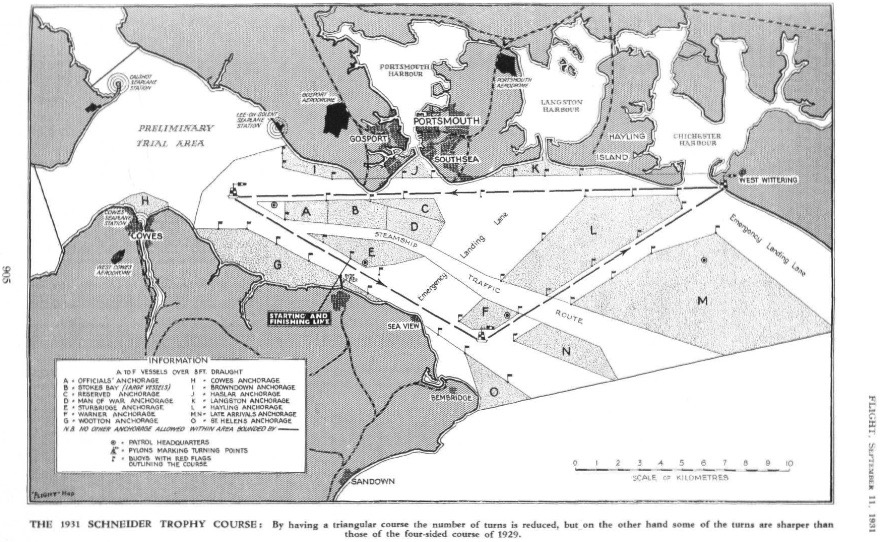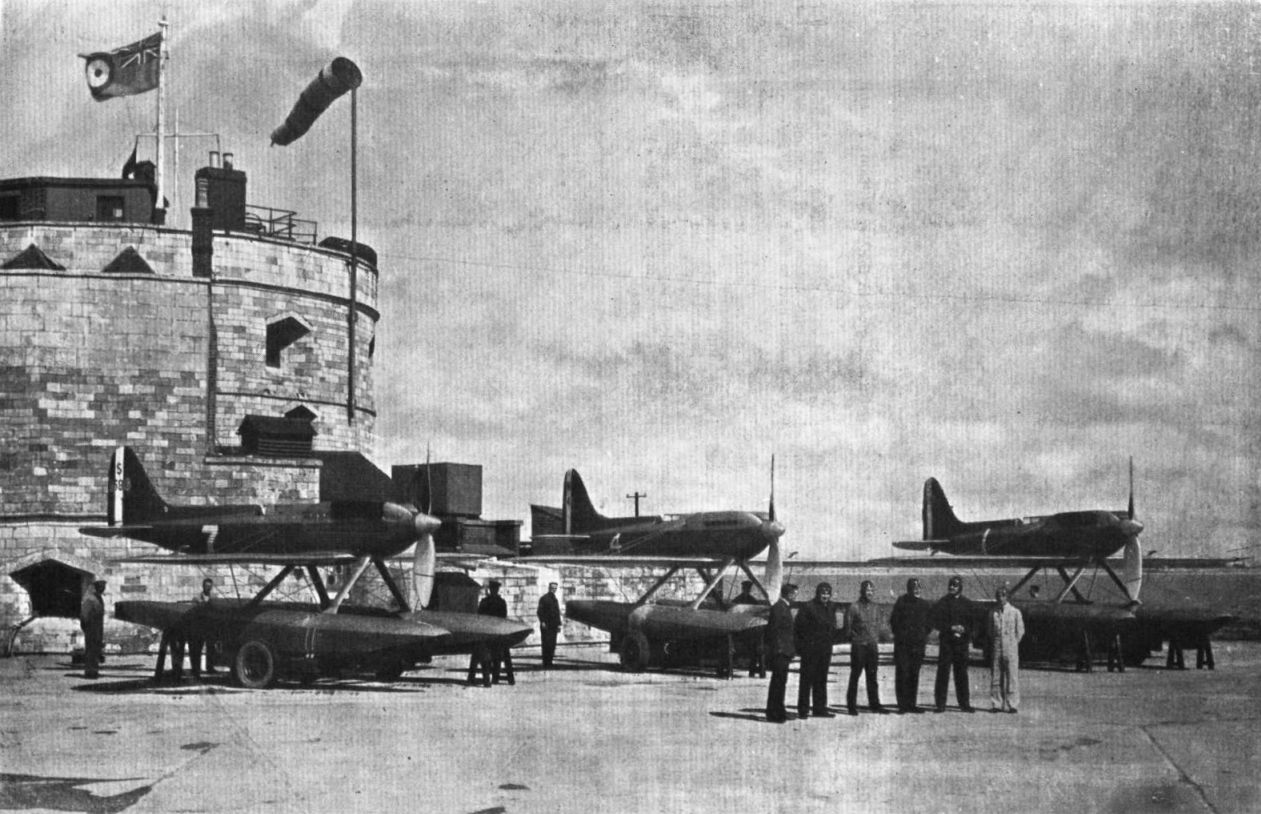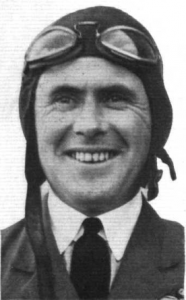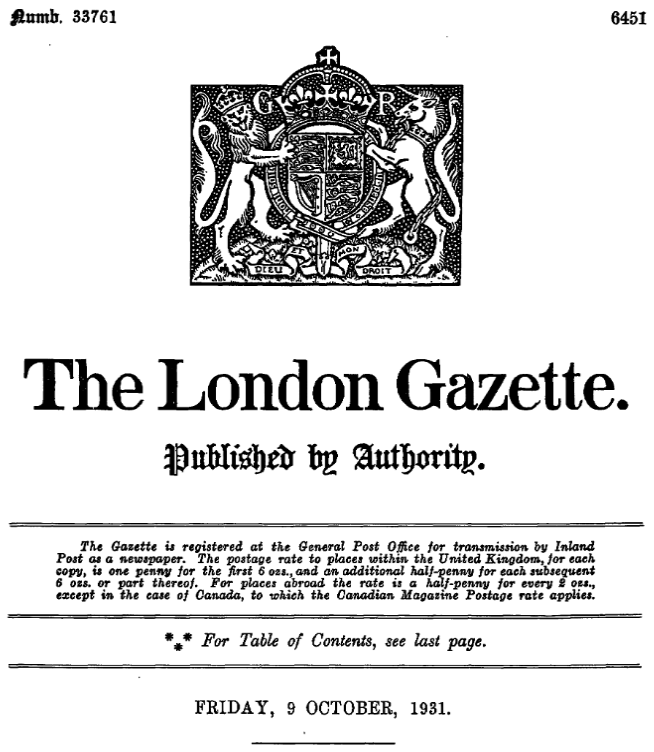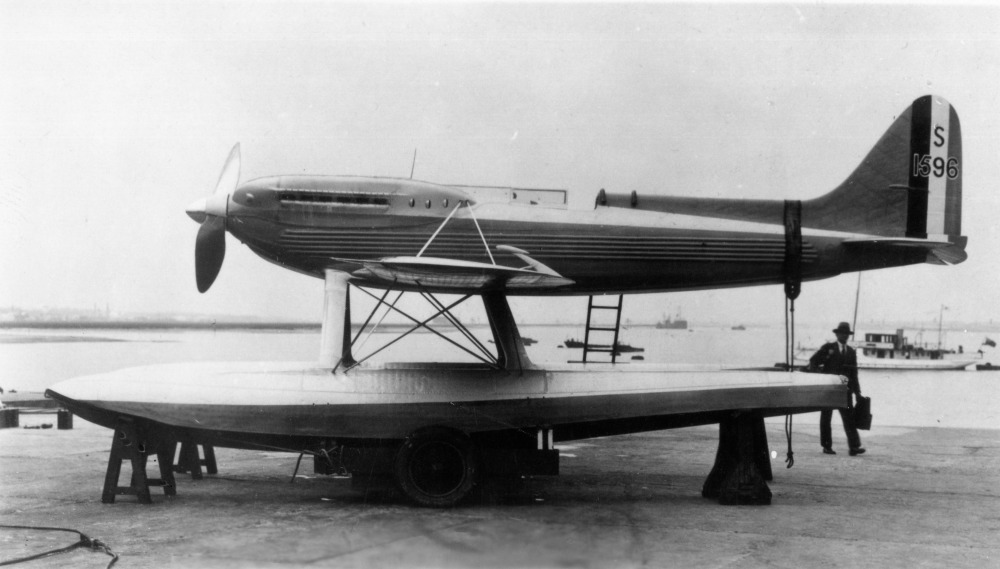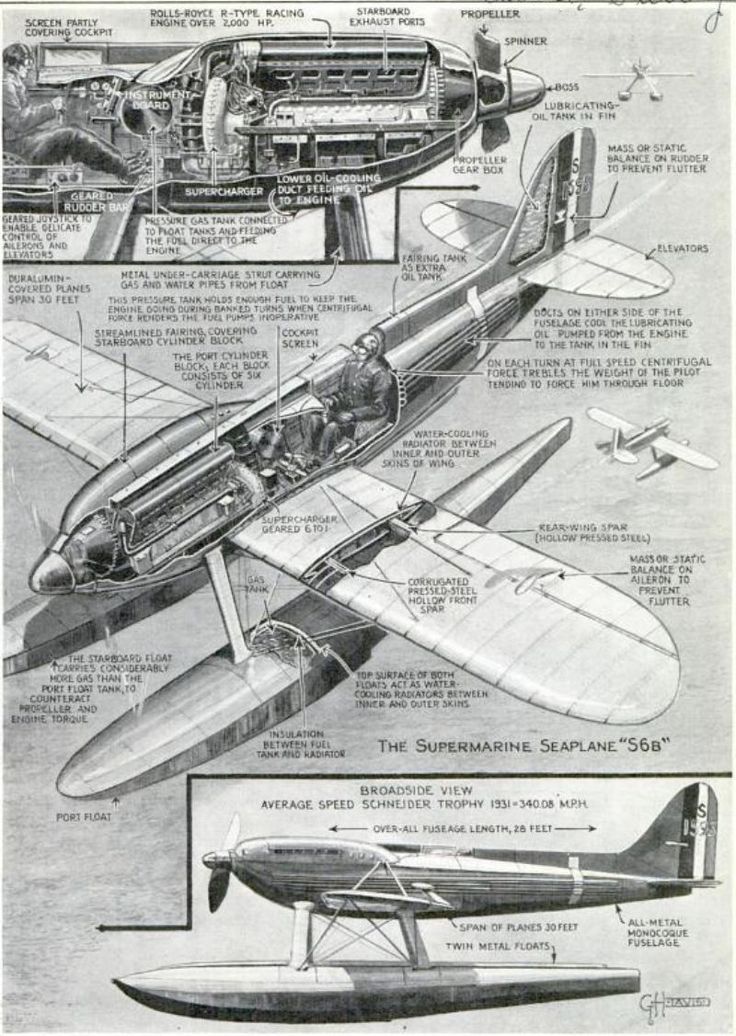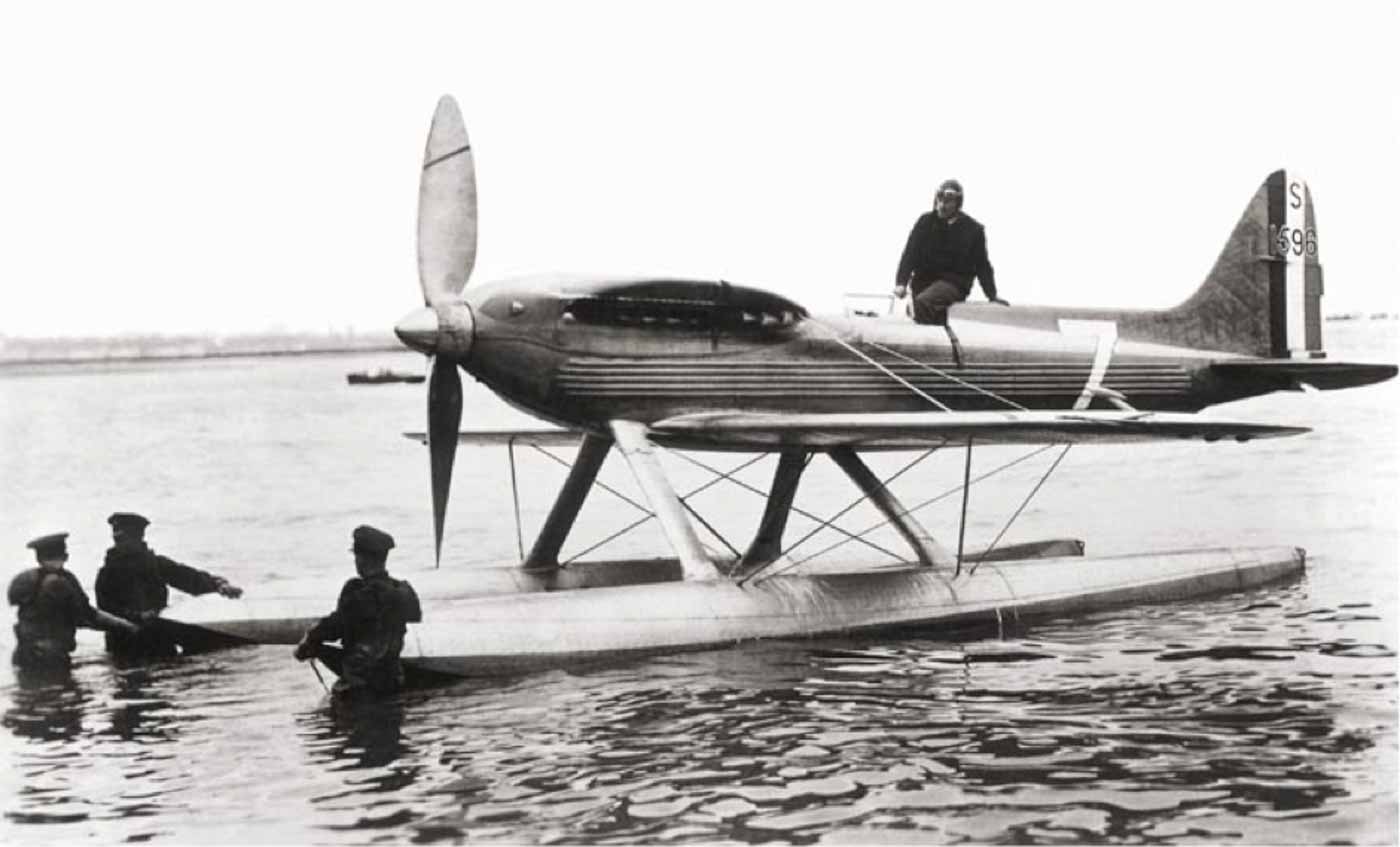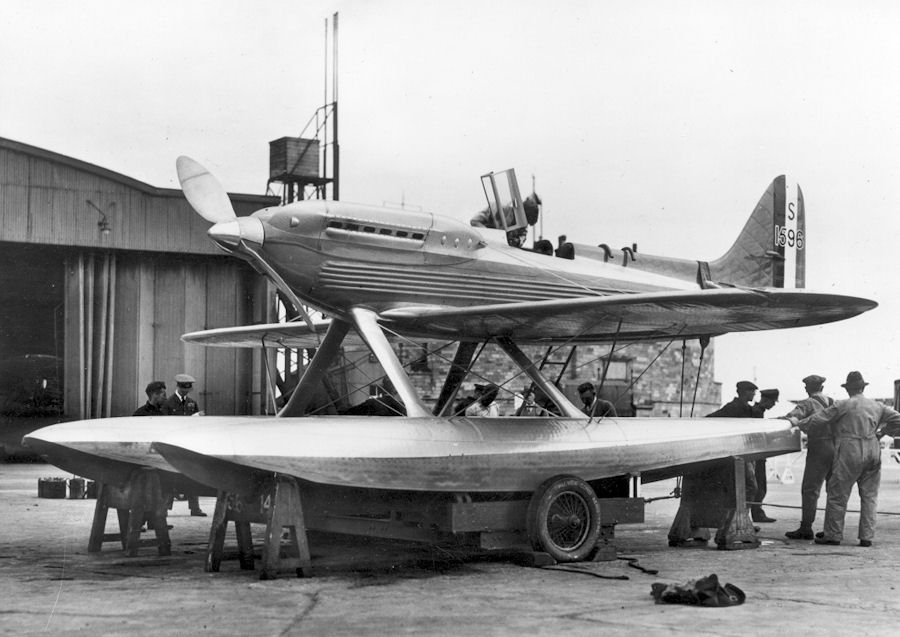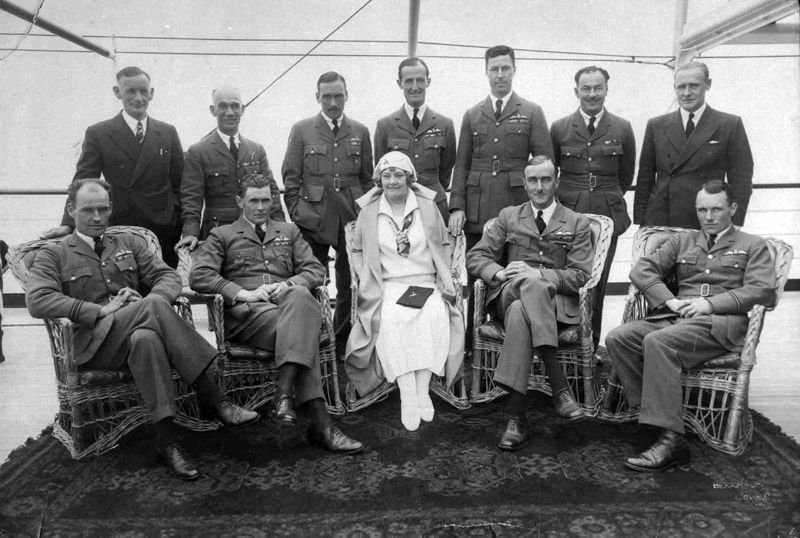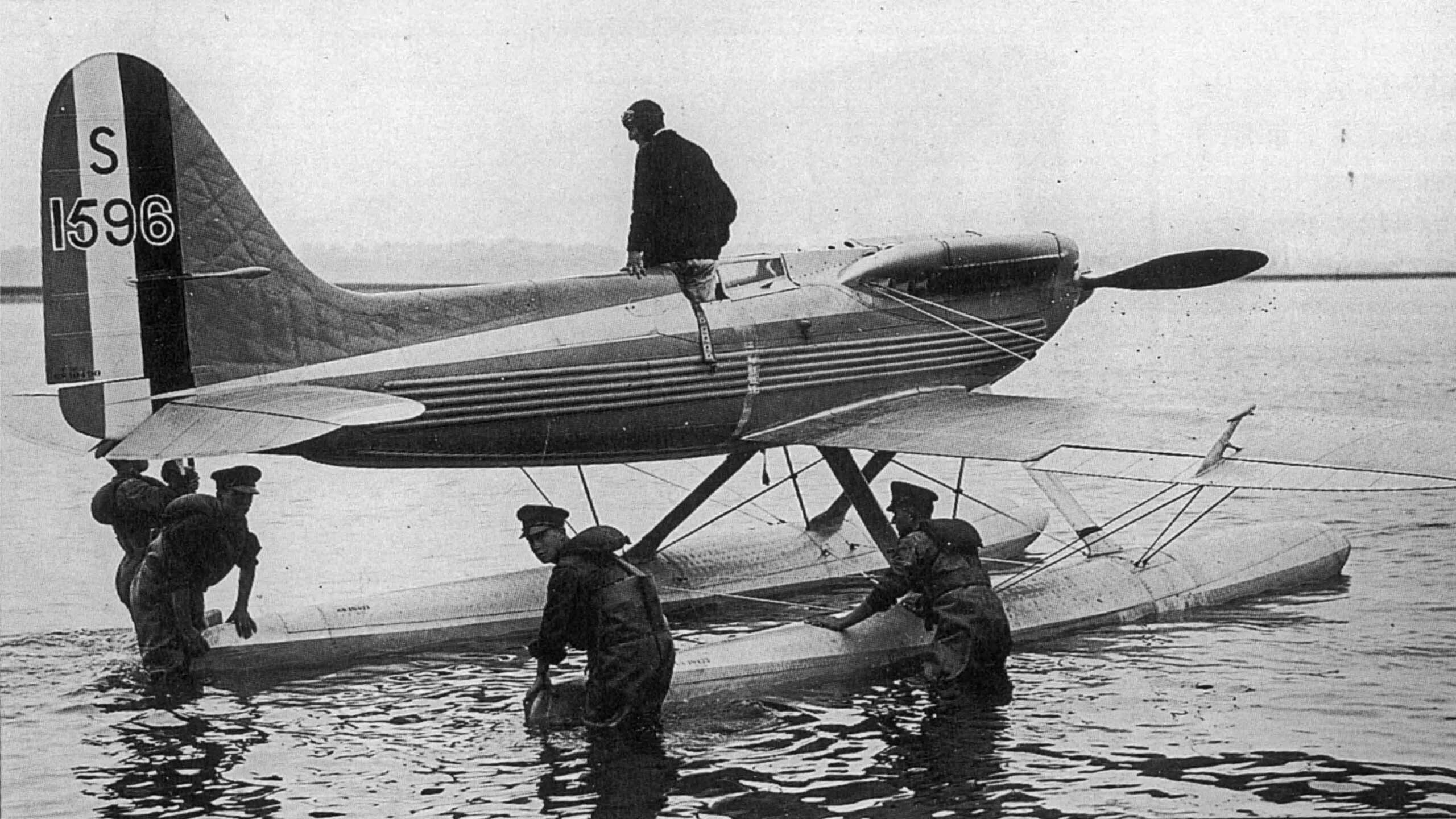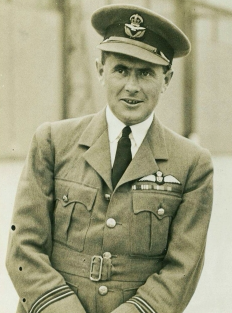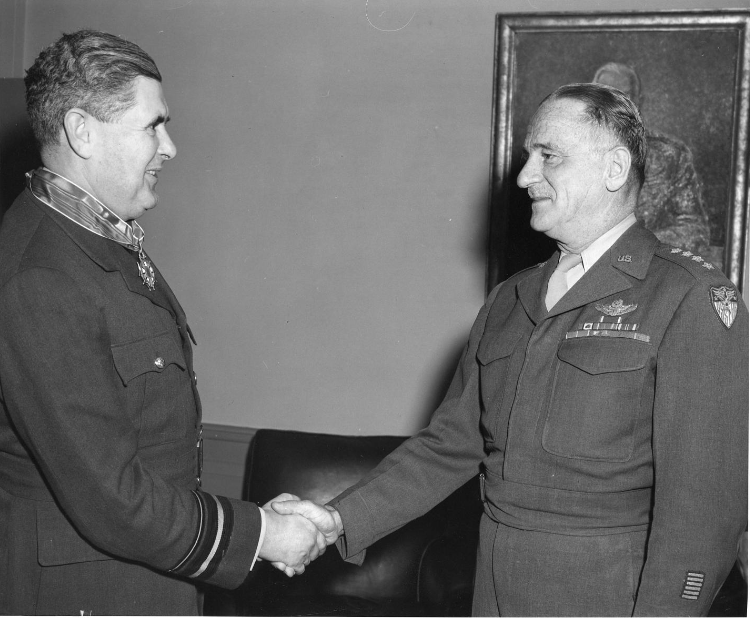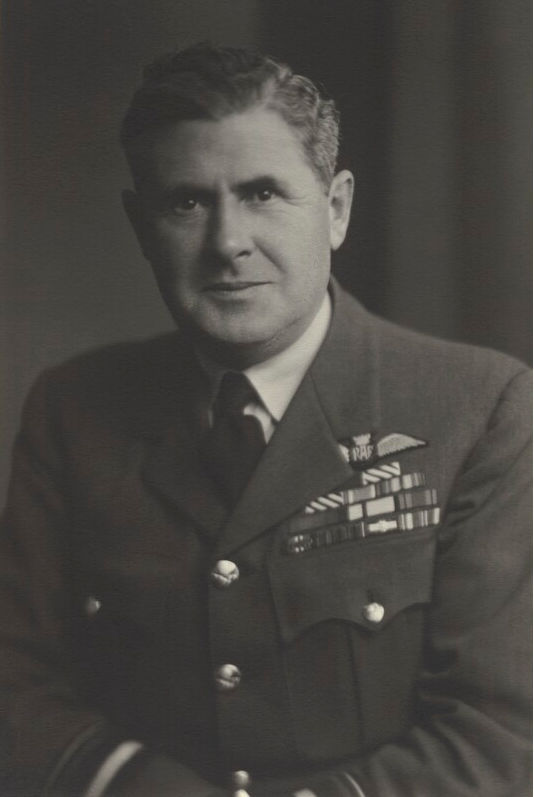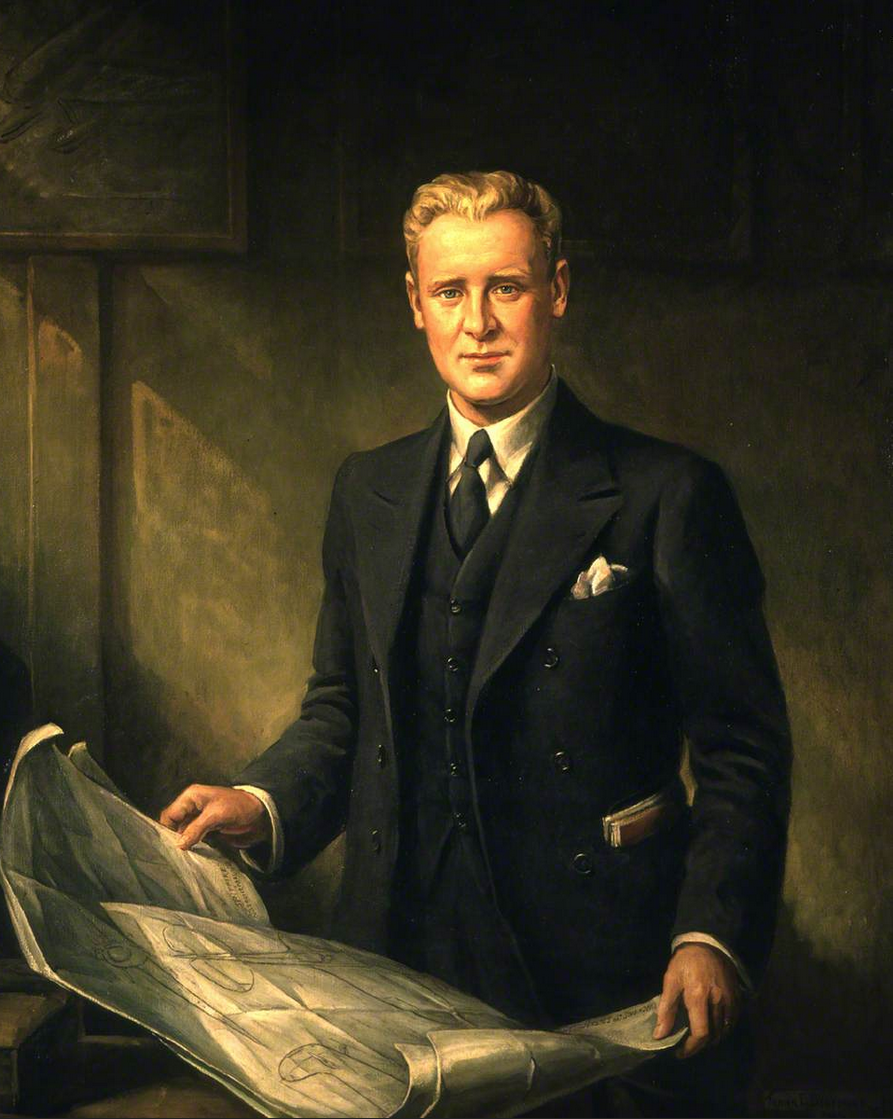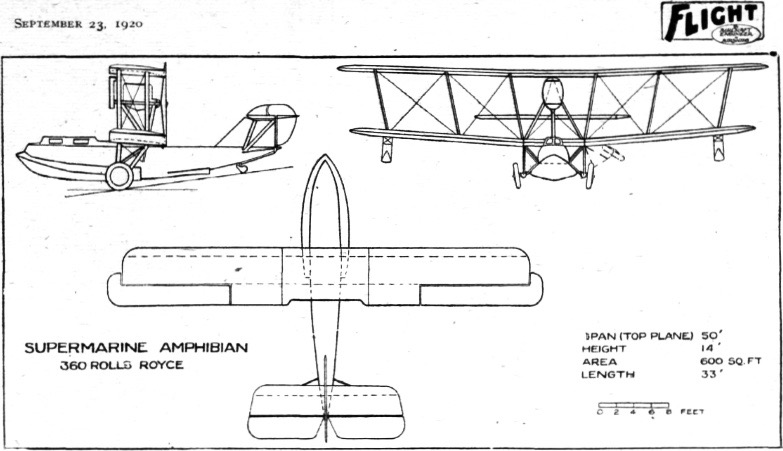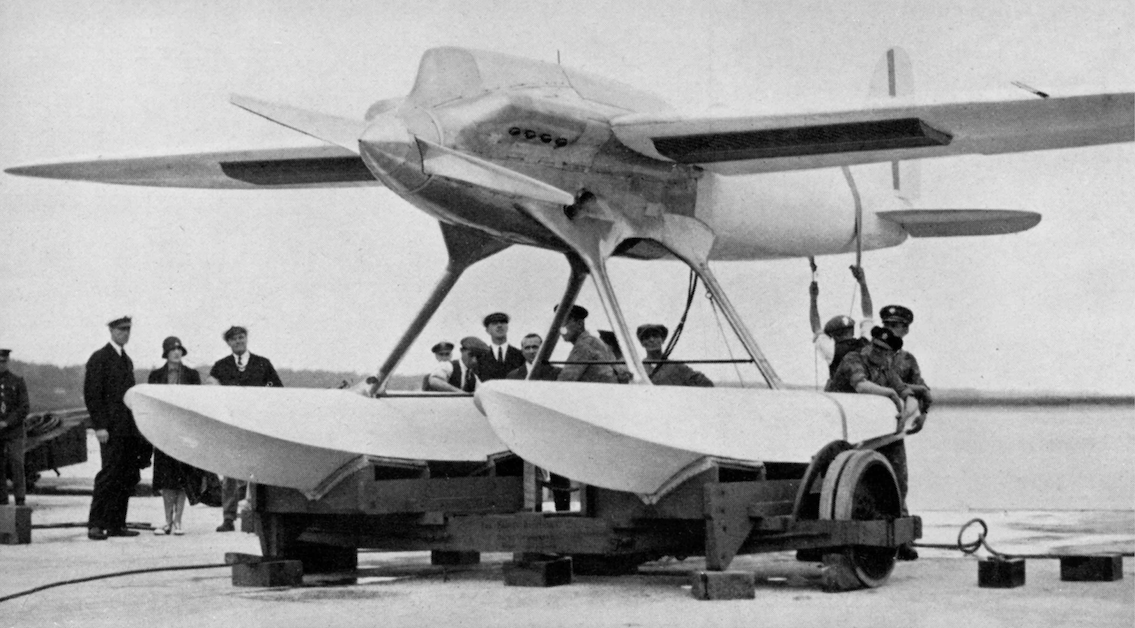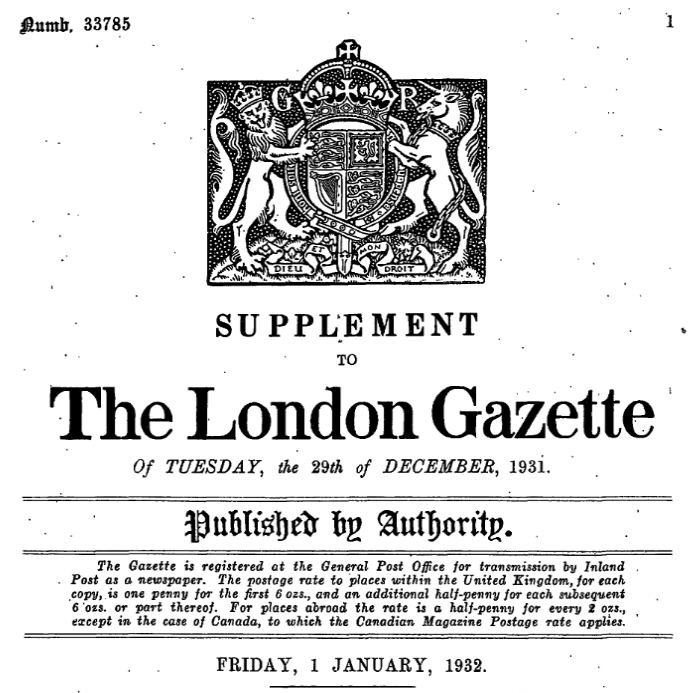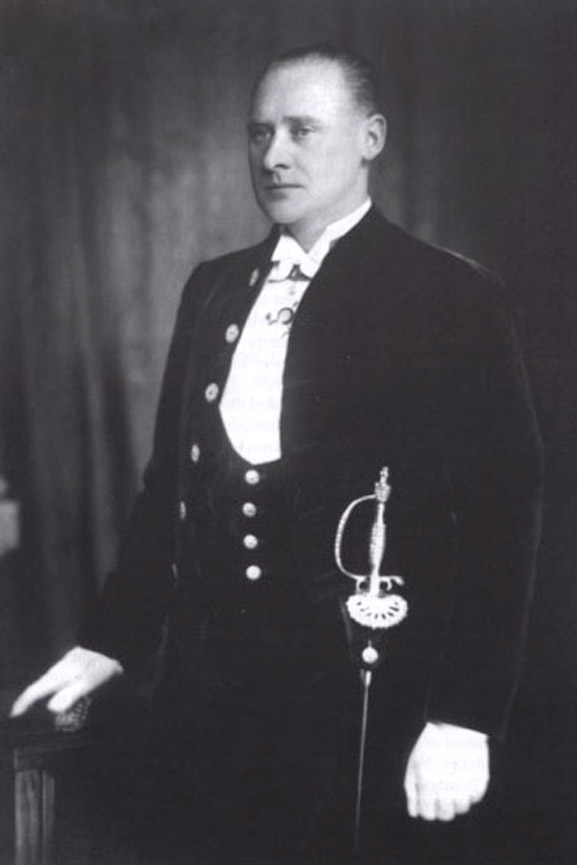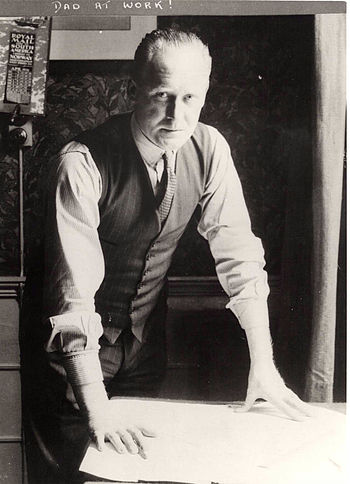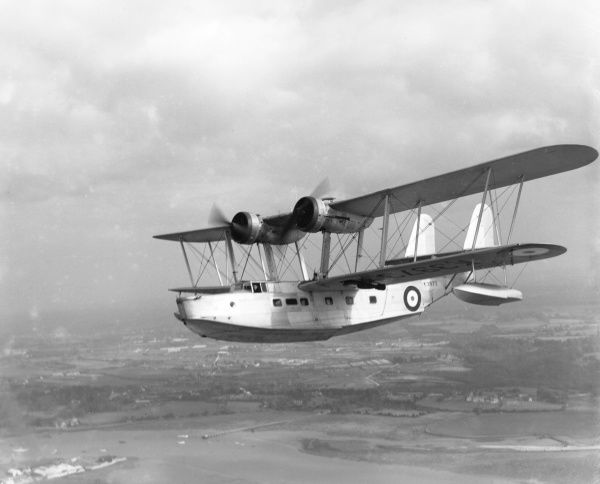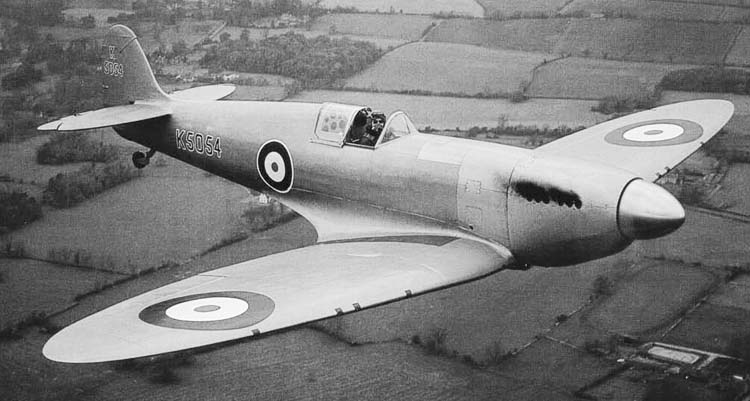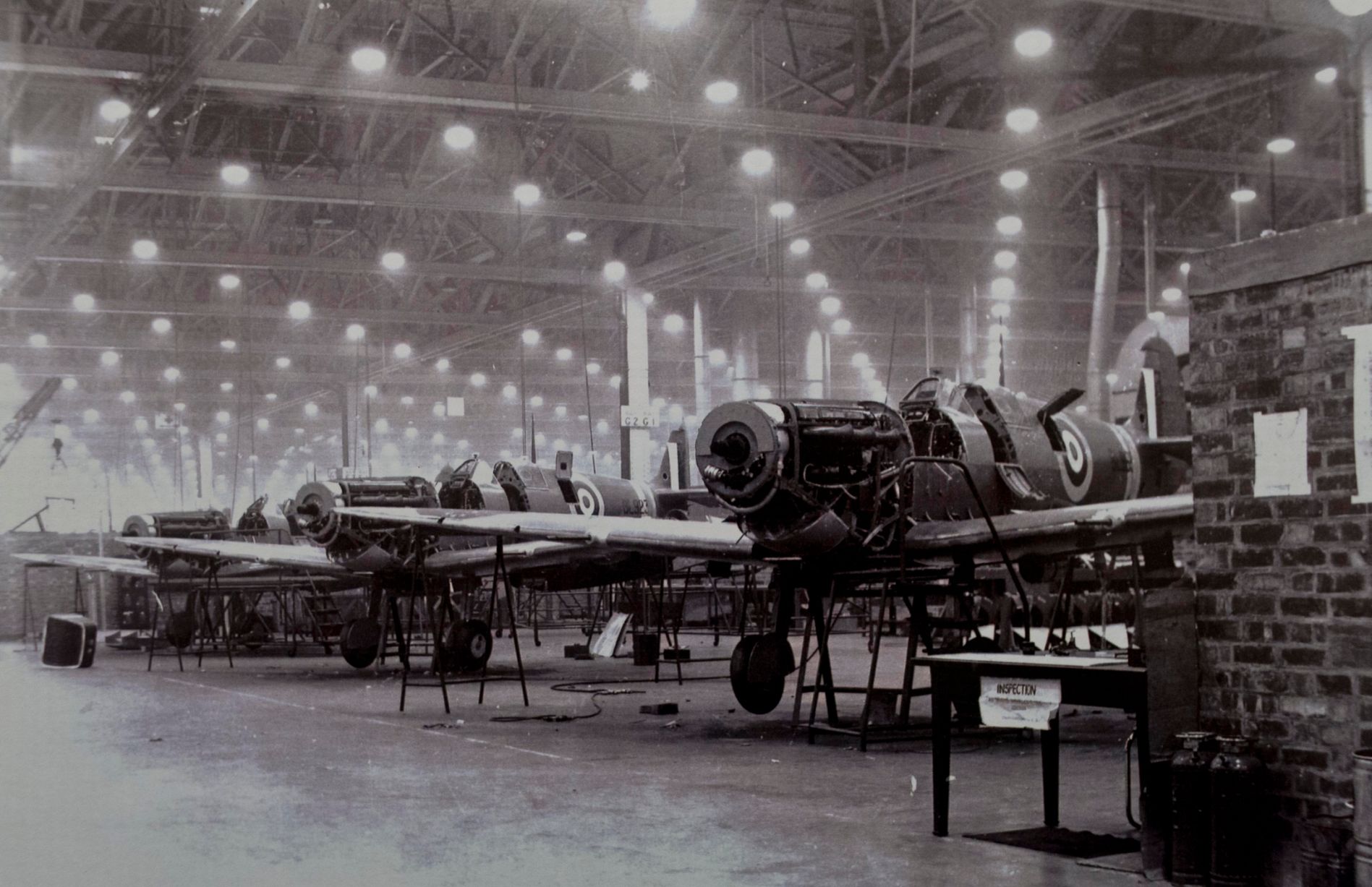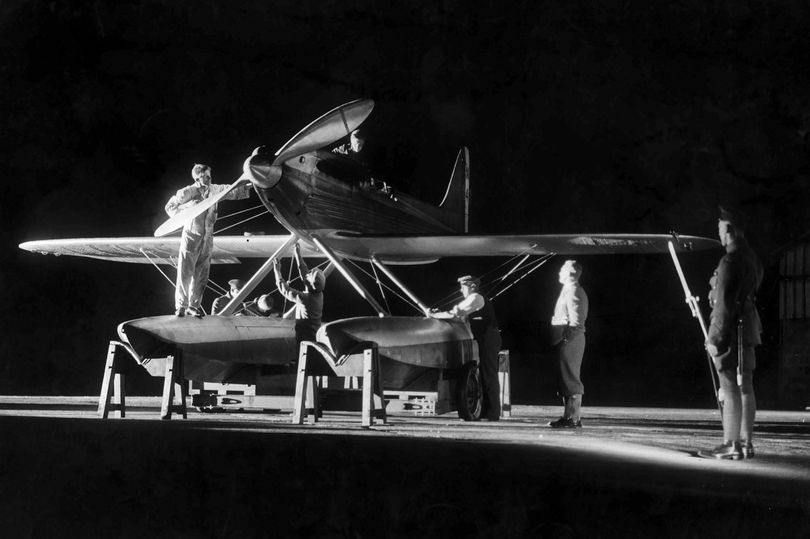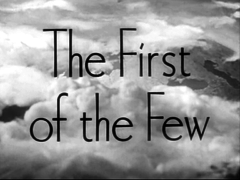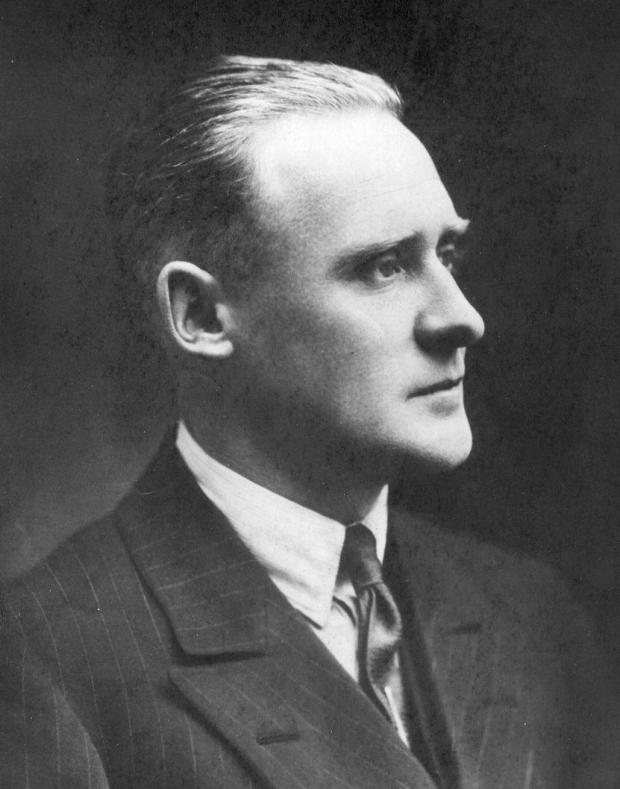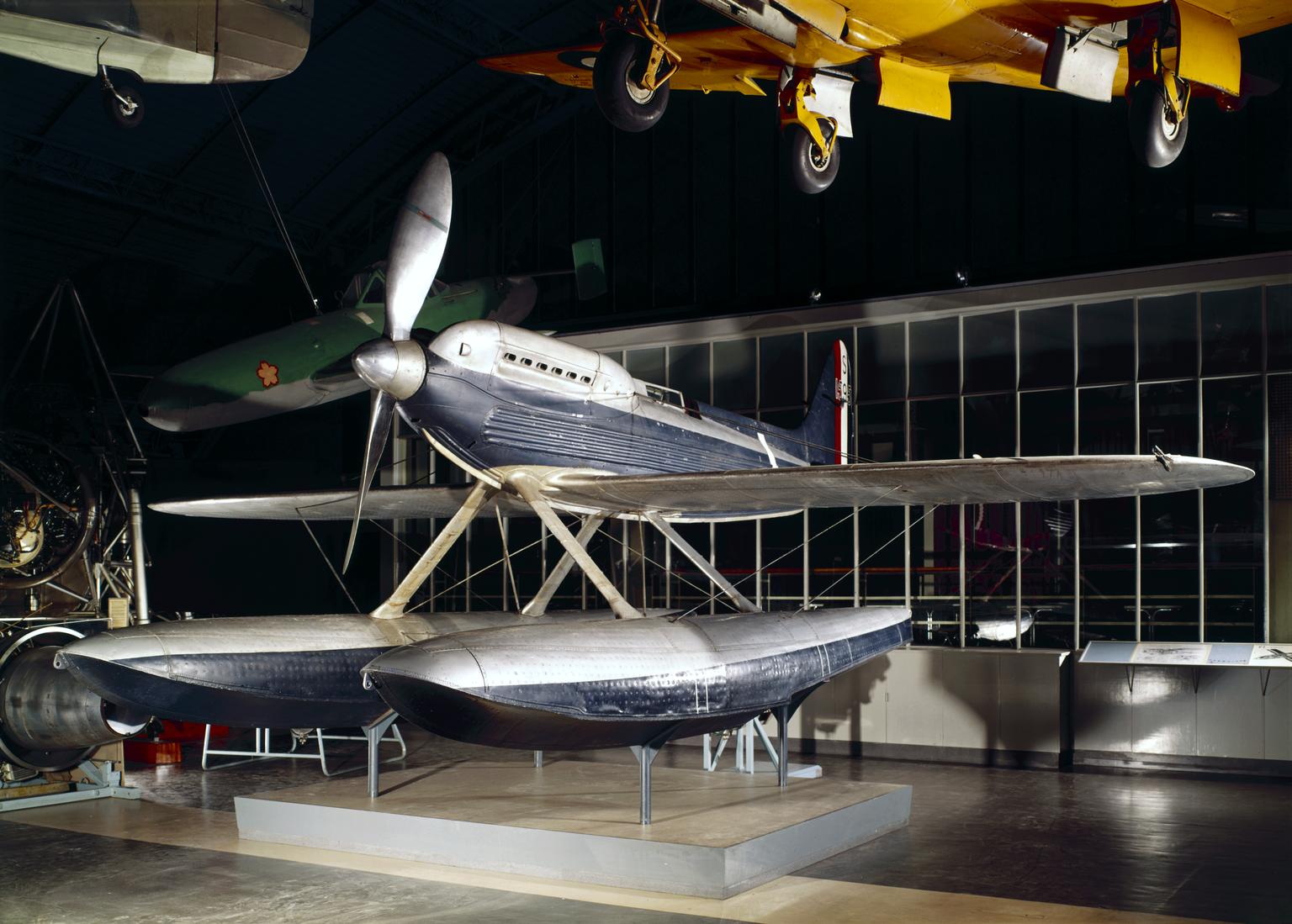
29 September 1931: After waiting all day for the fog to clear, at 5:49 p.m., Flight Lieutenant George Hedley Stainforth of the Royal Air Force High-Speed Flight at RAF Calshot, made a 43-second takeoff run and began an attempt to set a new Fédération Aéronautique Internationale (FAI) World Record for Speed Over a 3 Kilometer Course. ¹ His airplane was a Supermarine S.6B, number S.1595, the same seaplane that won the Coupe d’Aviation Maritime Jacques Schneider race on 13 September.
The High-Speed Flight had originally intended to use the second S.6B, S.1596, fitted with a specially-prepared Rolls-Royce Type R engine, for the 3 kilometer record attempt. S.1596 had been damaged on landing after a test flight, 16 September. While being towed back to RAF Calshot, the airplane sank. Fortunately, the special speed record engine, number R27, was not installed in S.1596 at the time of the accident.
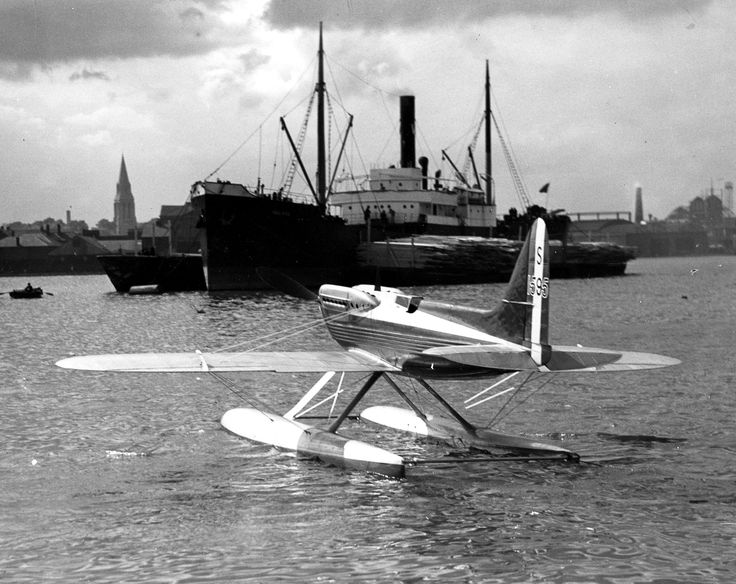
Supermarine S.6B S.1595 had engine R27 installed, along with a new airscrew provided by Fairey Aviation Company Ltd. Also new was the fuel mixture of “wood alcohol” (methanol), gasoline and ethanol, being used in the engine for the first time.
During the speed runs, the High-Speed Flight squadron engineering officer flew along the course at an altitude of 400 meters, carring a sealed barograph. This would later be used to calibrate the time measurements.
The course was flown between Hill Head and Lee-on-Solent, on the Hampshire shoreline, with Flight Lieutenant Stainforth making four runs, two in each direction, to minimize the effect of winds.
The runs were:
Run 1: 415.2 miles per hour (668.2 kilometers per hour)
Run 2: 405.1 miles per hour (651.9 kilometers per hour)
Run 3: 409.5 miles per hour (659.0 kilometers per hour)
Run 4: 405.4 miles per hour (652.4 kilometers per hour)
Average: 408.8 miles per hour (657.9 kilometers per hour)
The official record time as published by the FAI is 655 kilometers per hour (407 miles per hour). George Stainforth was the first pilot to fly faster than 400 miles per hour.
9th October, 1931.
ROYAL AIR FORCE.
The KING has been graciously pleased to approve the award of the Air Force Cross to the undermentioned officers of the Royal Air Force :—
Flight Lieutenant John Nelson Boothman.
In recognition of his achievement in winning the Schneider Trophy Contest, 1931.
Flight Lieutenant George Hedley Stainforth.
In recognition of his flights with the High Speed Flight of the Royal Air Force in connection with the Schneider Trophy Contest, 1931, culminating in the establishment of a world’s speed record on 29th September, 1931.
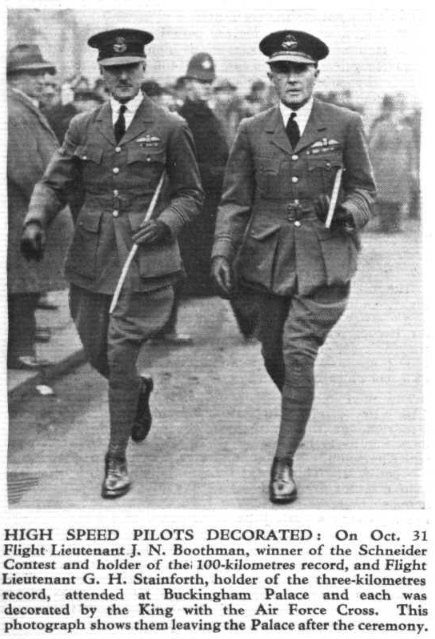
 S.1595 was Vickers-Supermarine S.6B Monoplane, designed by Reginald Joseph Mitchell, who would later design the legendary Supermarine Spitfire fighter of World War II. The racer was developed from Mitchell’s earlier S.4, S.5 and S.6 Schneider Cup racers, and was built at the Supermarine Aviation Works (Vickers), Ltd., Southampton, on the south coast of England. There were two S.6Bs, with the second identified as S.1596.
S.1595 was Vickers-Supermarine S.6B Monoplane, designed by Reginald Joseph Mitchell, who would later design the legendary Supermarine Spitfire fighter of World War II. The racer was developed from Mitchell’s earlier S.4, S.5 and S.6 Schneider Cup racers, and was built at the Supermarine Aviation Works (Vickers), Ltd., Southampton, on the south coast of England. There were two S.6Bs, with the second identified as S.1596.
The Supermarine S.6B was a single-place, single-engine, low-wing monoplane with two fixed pontoons as an undercarriage. It was of all-metal construction and used a high percentage of duralumin, a very hard alloy of aluminum and copper, as well as other elements. The float plane was 28 feet, 10 inches (8.788 meters) long, with a wingspan of 30 feet, 0 inches (9.144 meters) and height of 12 feet, 3 inches (3.734 meters). The wing area was 145 square feet (13,5 square meters). The S.6B had an empty weight of 4,560 pounds (2,068 kilograms) and gross weight of 5,995 pounds (2,719 kilograms).
In an effort to achieve the maximum possible speed, aerodynamic drag was eliminated wherever possible. There were no radiator or oil cooler intakes. The wing surfaces were constructed of two thin layers of duralumin with a very small space between them. The engine coolant, a mixture of water and ethylene glycol, was circulated between these layers, which are known as surface radiators. The engine had a high oil consumption rate and the vertical fin was the oil supply tank. The skin panels also served as surface radiators. The fuselage panels were corrugated for strength, and several small parallel passages transferred lubricating oil from the fin tank to the engine, and further cooled the oil.
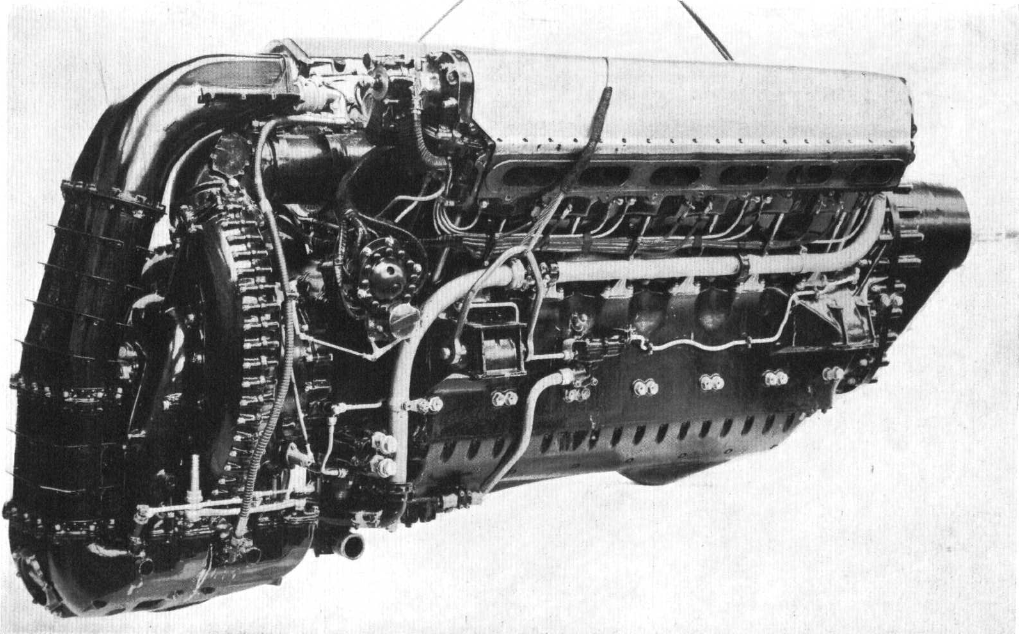
 For the 3 kilometer record, S.1595 was powered by a liquid-cooled, supercharged, 2,239.327-cubic-inch-displacement (36.696 liter) Rolls-Royce Type R single-overhead-camshaft (SOHC) 60° V-12 engine, number R27. The Type R was a racing engine with 4 valves per cylinder and a compression ration of 6:1. In the 1931 configuration, it produced 2,350 horsepower at 3,200 r.p.m. It used a 0.605:1 reduction gear and turned a forged duralumin Fairey Aviation fixed-pitch airscrew with a diameter of 8 feet, 6 inches (2.591 meters). R27 weighed 1,630 pounds (739 kilograms).
For the 3 kilometer record, S.1595 was powered by a liquid-cooled, supercharged, 2,239.327-cubic-inch-displacement (36.696 liter) Rolls-Royce Type R single-overhead-camshaft (SOHC) 60° V-12 engine, number R27. The Type R was a racing engine with 4 valves per cylinder and a compression ration of 6:1. In the 1931 configuration, it produced 2,350 horsepower at 3,200 r.p.m. It used a 0.605:1 reduction gear and turned a forged duralumin Fairey Aviation fixed-pitch airscrew with a diameter of 8 feet, 6 inches (2.591 meters). R27 weighed 1,630 pounds (739 kilograms).
There would have been no 1931 British Schneider Trophy Race team without the generous contribution of Lucy, Lady Houston, D.B.E., who donated £100,000 to Supermarine to finance the new aircraft. Lady Houston would later sponsor the 1933 Houston Mount Everest Flying Expedition.
The record-setting aircraft, S.1595, is in the collection of the Science Museum, London.
George Hedley Stainforth was born at Bromley, Kent, in 23 March 1899, the son of George Staunton Stainforth, a solicitor, and Mary Ellen Stainforth.
Stainforth was a graduate of the Royal Military Academy Sandhurst. On 11September 1918, Cadet Stainforth was commissioned a Second Lieutenant of Infantry, East Kent Regiment (“The Buffs”), ³ effective 21 August 1918 and served in France. On 30 March 1923, Lieutenant Stainforth, R.A.R.O., was granted a short service commission as a Flying Officer, Royal Air Force, effective 15 March 1923.
Flying Officer Stainforth married Miss Gladys Imelda Hendy at St. George’s Hanover Square Church, London, in March 1923.
Stainforth was promoted to Flight Lieutenant, 3 July 1928. He was granted a permanent commission in this rank 1 October 1929.
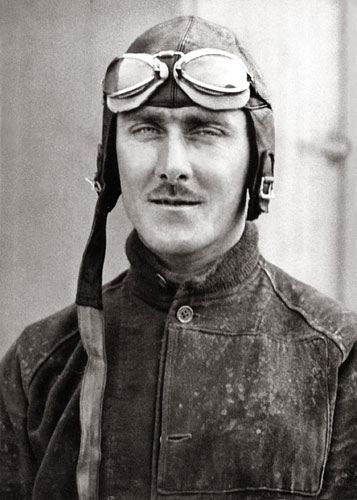
In 1929, Stainforth won the King’s Cup Air Race, and on 10 September, set a Fédération Aéronautique Internationale (FAI) World Record for Speed Over a 3 Kilometer Course, averaging 541.10 kilometers per hour (336.22 miles per hour) while flying a Gloster Napier 6 powered by a Napier Lion VIID broad arrow W-12 engine.
Stainforth was promoted to Squadron Leader with effect from 1 June 1936. On 12 March 1940, he was promoted to the rank of Wing Commander, with effect from 1 March 1940.
During World War II, Wing Commander Stainforth commanded No. 89 Squadron in Egypt. The New York Times reported that he was “the oldest fighter pilot in the Middle East.” On the night of 27–28 September 1942, while flying a Bristol Beaufighter near the Gulf of Suez, Wing Commander George Hedley Stainforth, A.F.C., was killed in action. He was buried at the Ismailia War Memorial Cemetery, Egypt.
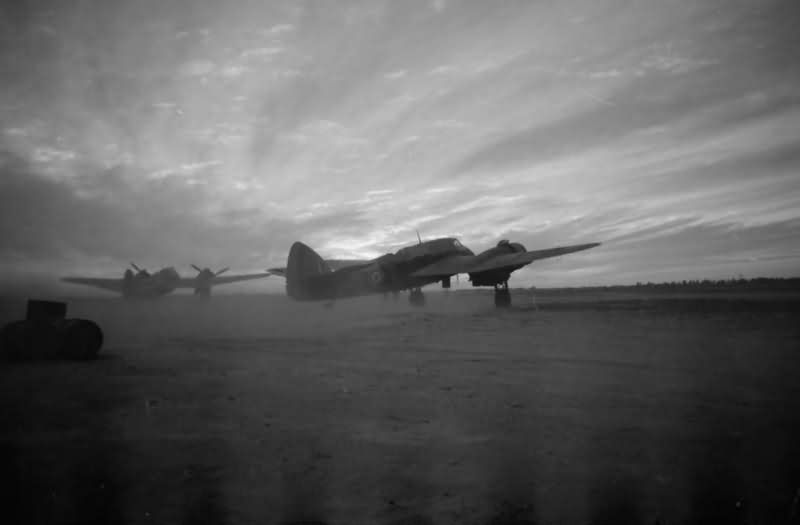
¹ FAI Record File Number 11831
© 2018, Bryan R. Swopes
